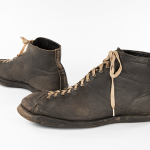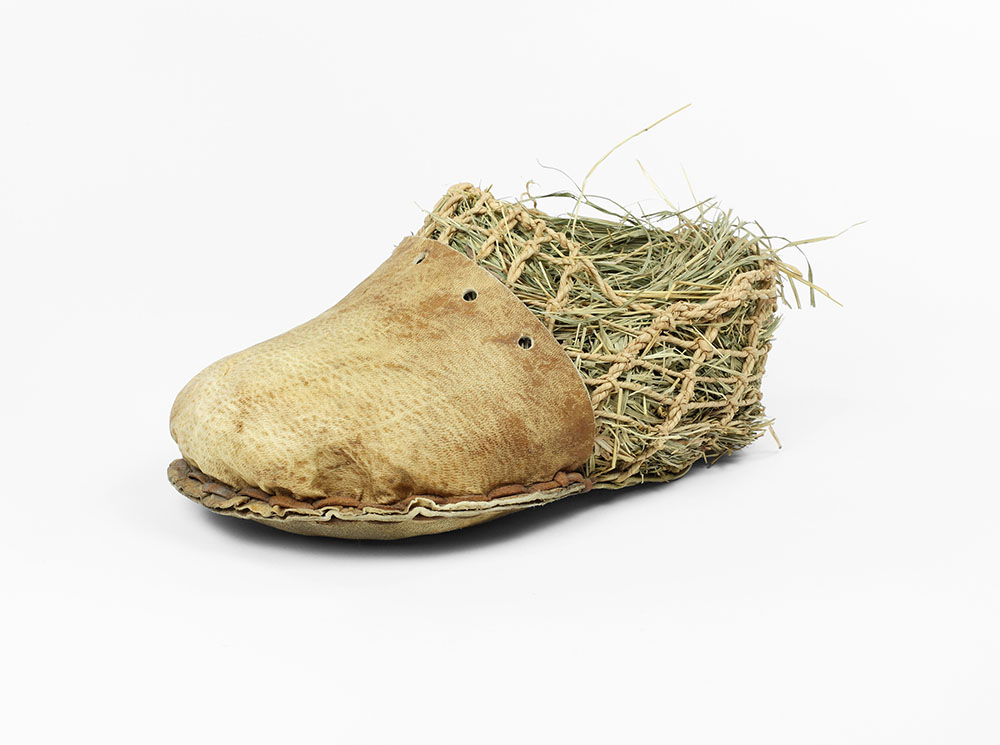On September 19th, 1991, Ötzi the Iceman was found in the Austrian-Italian Alps. He is the oldest, best preserved human body known to science at 5300 years old. Ötzi Man lived in approximately 3300 BCE and when his body was discovered he was still wearing one of his shoes, which are the oldest known preserved shoes in Europe. The thrilling discovery of this prehistoric shoe led to an in-depth study of his footwear.
This exact replica, produced under the guidance of the late Czech researcher Dr. Petr Hlavácek, was part of that detailed research. This replica shoe is made from the original raw materials and using the primitive tools, like the flint-stone knife. The hides (bear leather, deer skin and veal skin) were tanned using the primitive technology that was most likely available to the Ötzi man: beef brain mixed with pork liver, and lightly smoke-dried. After experimenting, Dr. Hlavacek’s team believes they also found the Ötzi ‘s technique for making the bast strings.
This shoe was made to fit Dr. Hlavacek, and was worn by him on a 12-man Czech-Austrian expedition with representatives from Hlavacek’s university and the media in September 2001. The men climbed to the peak of Mount Similaun (3,599 metres) shod in the replicas of the Iceman’s shoes to demonstrate the footwear’s suitability to Alpine snow, water and ice conditions.
Hlavacek’s conclusions after two field tests were positive. Assuming the Ötzi ‘s shoes were custom tailored with an exactness of +/- 5mm, his boots allowed for very comfortable movement, even over uneven forest terrain. The shoes were so effective at weight distribution that the wearers had no blisters and feet were kept dry and warm, effective in temperatures of -5°C to -10°C.
You can see this replica shoe on display now in our “All About Shoes” exhibition. The Ötzi man mummy is on view at the Museo Archeologico dell’Alto Adige (the South Tyrol Museum of Archeology), in Bolzano, Italy. Visit www.iceman.it/en/ for more information.



